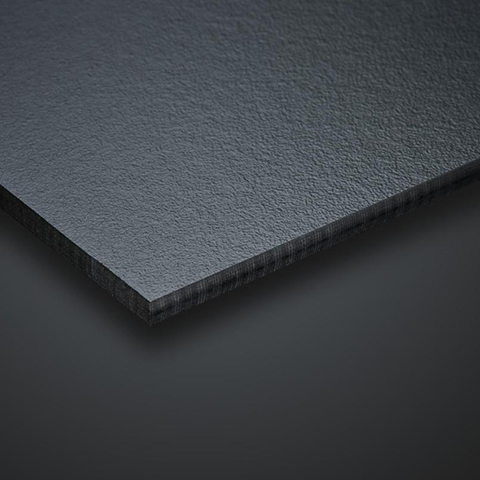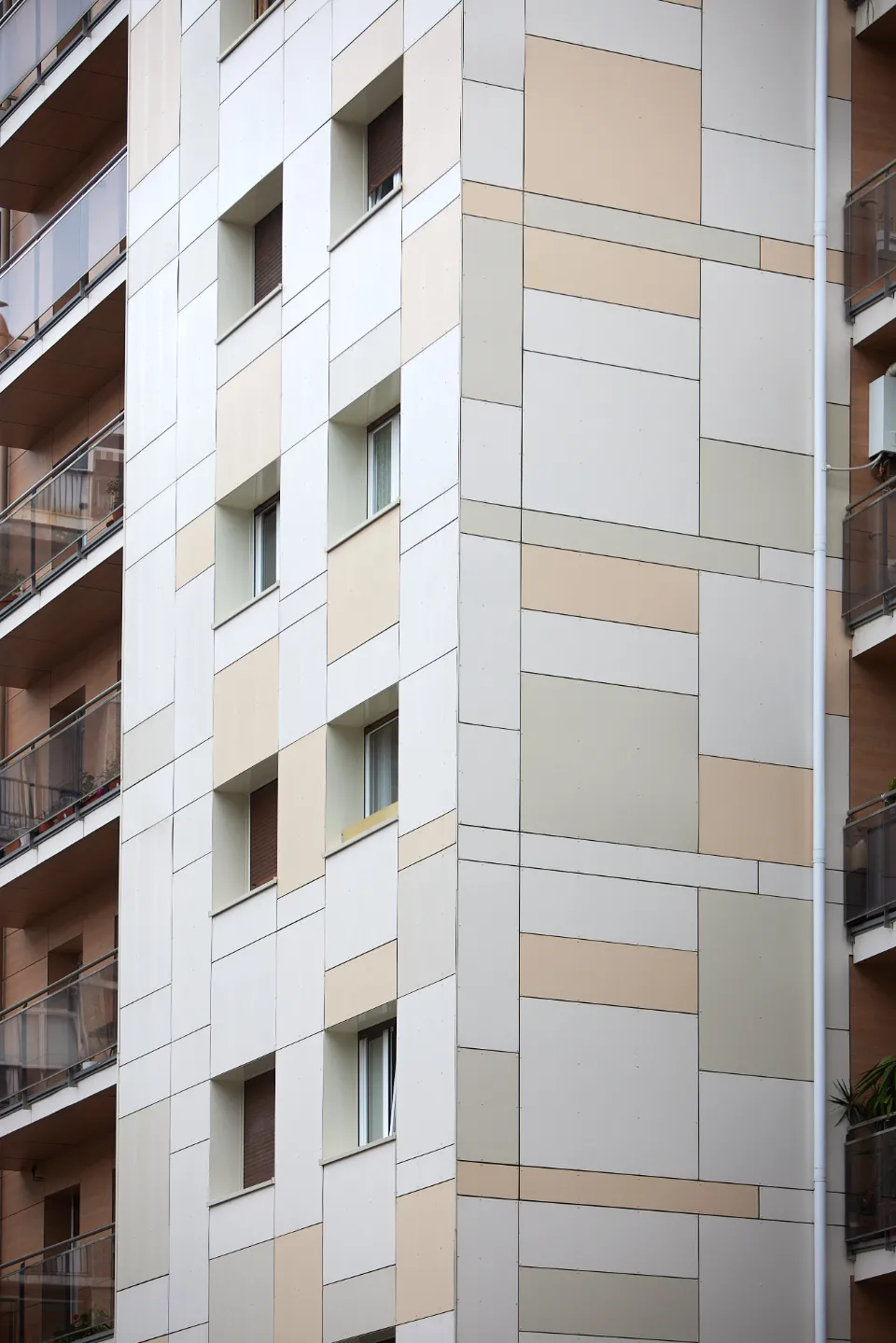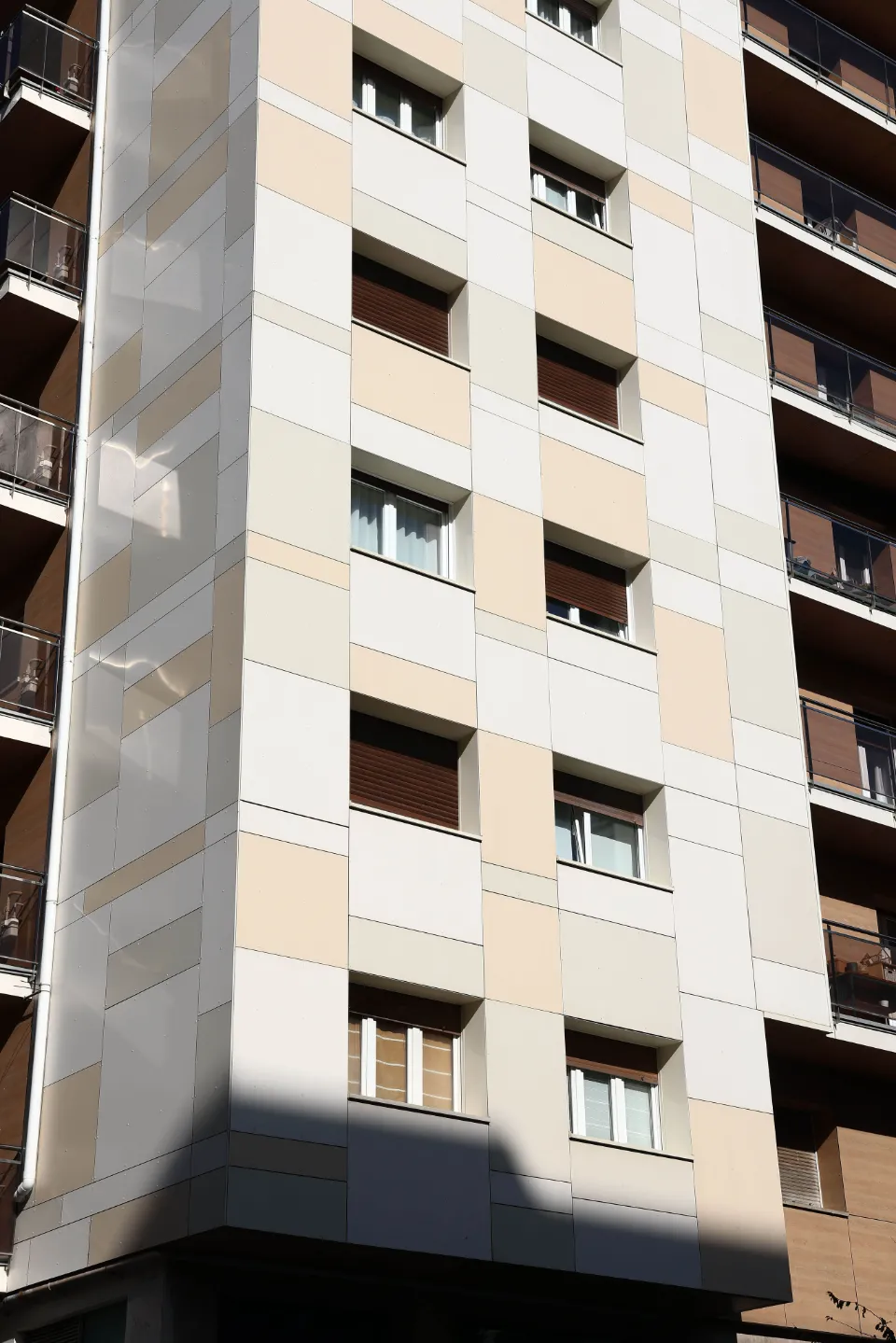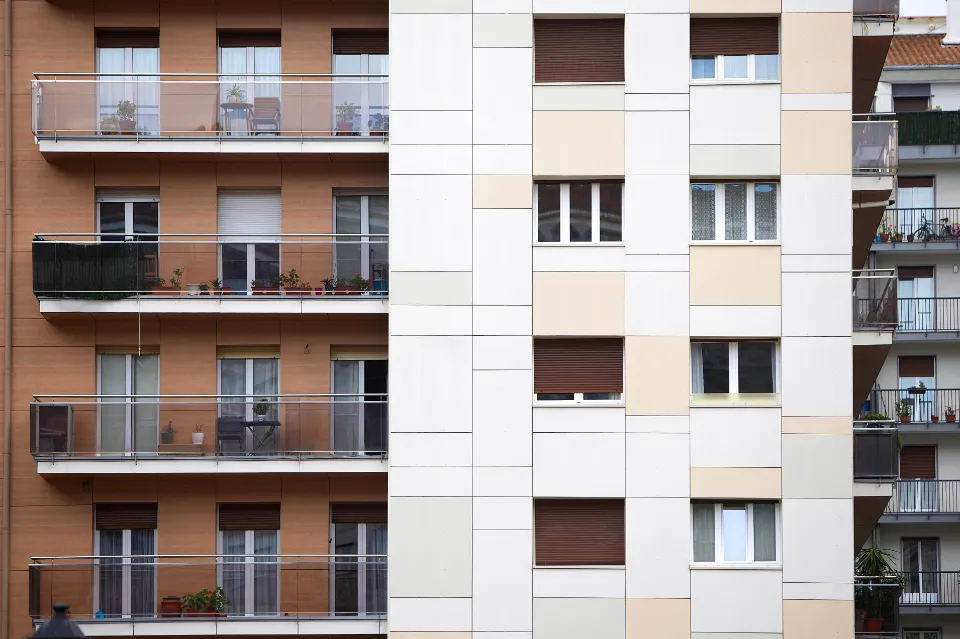Residence Isabel II,14 - Amara




Improving aesthetics and energy efficiency – in a challenging context
Located on the Atlantic coast of Spain, San Sebastián is the capital of the country’s smallest province, Guipúzcoa. In the Amara neighbourhood, an area located about 1km from the city centre and initially developed in the 1960s and 70s, an 8-story residential building was in need of a thorough renovation: the envelope was due for an upgrade that would combine aesthetics with thermal efficiency. The project, though, came with an unusual caveat: the need to work on a housing complex that had been built on former marshlands and repeatedly exposed to flooding. As a result, the building was slightly tilted. Measured from the basement to the highest floor, the façade was off by no less than 40cm!

A solution that combined three crucial advantages
Javier Solano was in charge of the project at Urumea Asociados, a local architectural firm. He comments: “In fact, the buildings in the area could be called ‘stranded ships’. This one was no exception, and it confronted us with several serious issues. The tilt, which was detected on an initial scan, was just one of them. We also had to address a dampness problem. In addition, we had a weight constraint: we couldn’t overload the facades, as this could have worsened the structural issues affecting the building”. In such a context, a ventilated façade was especially well suited. It would minimise the exposure of the building to moisture, and its ventilating function would suppress the risk of dampness.
Opting for HPL (High Pressure Laminate) as a cladding material would come with two additional, decisive advantages – a comparatively low weight and the possibility to cut the material into the slightly trapezoidal panels needed to take the building’s tilt into account. This would have precluded, among others, the use of ceramic cladding elements.

Thermal efficiency as a prerequisite
The project was subsidised, to an extent, by the European Union. It had therefore to result in a significant gain in terms of energy efficiency: for the project to be eligible, a +2 increase of the energy classification was required. This provided Javier Solano with an additional reason to favour a ventilated façade. He explains: “In terms of thermal performance, a ventilated façade is a superior option. And in the long run, its durability and easy maintenance make it all the more attractive. We have been able to lower energy consumption and CO2 emissions by 57%. This remarkable result allowed us to qualify for the EU subsidy programme, while making the building significantly more sustainable”.
The ventilated façade system could be installed on three façades only, totalling 2,000m². As a result of the structure’s tilt, the fourth façade was partially separated from the adjacent building by a 40cm gap, but the space was too narrow for any type of cladding. The performance objectives were reached nonetheless – by combining 100mm of rock wool insulation on the three façades with a highly efficient, 80mm polyisocyanurate insulation on the rooftop.

How Trespa® became the material of choice
Javier Solano points out: “My choice was the result of an in-depth analysis of comparable options. With their material characteristics and technical properties, the Trespa® panels clearly outperform other HPL products. As part of my assessment, I requested a significant number of certifications and documents, and Trespa proved very responsive and helpful. They provided me with all the information I needed, and I really appreciated their transparency”. “Once the project was underway, the team at Trespa lived up to our expectations: they were friendly, approachable and highly professional. Customer service was impeccable, with samples provided within 48 hours”.
A result as beautiful as it is efficient
Despite the solution’s obvious upsides, convincing the committee that had commissioned the renovation was not entirely straightforward. Javier Solano goes 3 into detail: “In San Sebastián, architecture tends to conform to very classic standards. Accordingly, a ventilated façade with a HPL cladding came across as a rather bold, unconventional choice. At first, even the colour scheme we had suggested was quite contentious. Ultimately, though, a senior committee member managed to convince his colleagues”.
“Our goal is always to preserve the identity of a renovated building. Here, we had to deal with the visual codes of the 1960s and 70s. We chose to reinterpret them in a way that would blend into the surroundings, while using an innovative material and a technically superior system. Thanks to Trespa’s extensive and tasteful colour palette, we managed to create a mosaic effect that is both true to the original period and contemporary”.
To achieve the mosaic effect, Trespa® Meteon® panels of various sizes in three solid colours were combined into what looks, at first sight, like a random pattern. The panels play with a subtle variation of pastel tones – A05.1.0 Papyrus White, A05.1.1 Stone Beige and A07.1.1 Sand. In recessed parts of the façades, the cladding switches to a warm-hued wood decor (NW15 Milano Sabbia), creating a pleasing contrast. The Trespa® Meteon® panels have been fastened with visible, but inconspicuous rivets, using the cost-effective TS700 system. From the second floor upwards, the rivets are hardly visible at all. As far as aesthetics are concerned, the choice of a ventilated façade came with an additional advantage: since pipes and data cables could be concealed behind the cladding, the new façade has gained a ‘cleaner’, more elegant look

Promising perspectives
Epitomising the potential of Trespa® Meteon® ventilated façades to blend creativity, innovation and technical excellence, this renovation project in San Sebastián has been a success for all involved parties – as a solution that is not only efficient, durable and sustainable, but also harmonious and elegant. 4 Accordingly, it comes as no surprise that Urumea Asociados has again chosen Trespa® Meteon® as part of a new project. Javier Solano concludes: “Beyond the solution itself, we are grateful for the friendly and responsive support of the Trespa team. Incidents can occur, doubts can sometimes arise, but we know that we can always count on Trespa – and we value a collaboration that is clearly based on partnership“


















